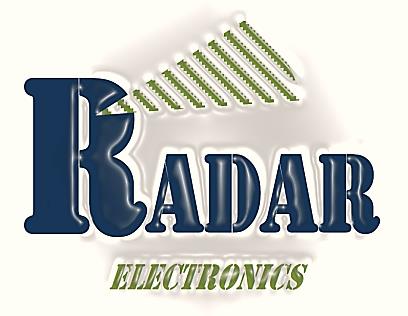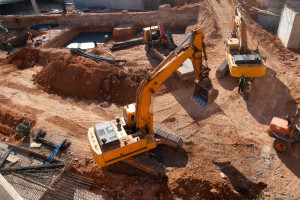AUTONOMOUS SOLUTIONS
ASI needed an
affordable and scalable component to improve its environmental-sensing systems.
As one of the leading providers of vendor-independent vehicle-automation systems, Autonomous Solutions, Inc. (ASI) brings together the best technologies to address specific customer challenges. The LIDAR system it had implemented on a customers’ heavy-duty mining and agricultural equipment was able to detect obstacles under normal conditions. When dust, rain, and snow were present, however, the LIDAR system had difficulty identifying actual objects. By fusing LIDAR with PRECO’s PreView Radar® sensors, ASI’s customers can operate their autonomous vehicles knowing that ASI’s solution will detect objects in all weather and light conditions. Autonomous Solutions, Inc.’s tagline says it all: “Ground Vehicle Automation for The World’s Dull, Dirty, And Dangerous Jobs.” There are fewer jobs dirtier than large-acreage farming, or potentially more dangerous than open-pit mining. As seen in so many other cases, the best way to be the most efficient and protect lives in some of these dangerous environments is often to take human operators out of the equation. But that means companies must find ways to ensure vehicles operate in a flawlessly safe fashion. Cost savings made possible by the reduction in the number and severity of accidents has been particularly important for mining companies.
Combining LIDAR and Radar to Improve “Visibility”
“One of the main features we sell to our customers is obstacle protection and avoidance,” says ASI robotics research engineer Taylor Bybee. “To perform that, we need environmental sensing, which we’re delivering with a combination of LIDAR and radar units. LIDAR provides high-resolution information, but it is susceptible to unwanted returns from dust and rain and snow. PRECO’s radars complement this information by being able to penetrate harsh conditions to verify the existence of actual obstacles.” Terence Keegan is ASI’s perception software engineer, responsible for the company’s object detection solutions. “Our current application for the mines is in the haul and dump cycles, both of which can create huge problems with dust, dirt, and mud. We were looking for a way to fuse radar with active LIDAR sensing to be able to operate in these difficult environments.” After testing PRECO’s PreView Sentry™ radar sensors for hundreds of hours, ASI was convinced that the combination of LIDAR and radar made sense. Since it implemented this two-pronged approach, ASI has seen a dramatic reduction in unwanted returns, along with high marks for the radar sensors’ durability.
Big Equipment Can Mean Big Blind Spots
ASI’s overarching goal, says Keegan, is to obtain as many visual perspectives around the vehicle as possible so the operators can see potential obstacles within a full 360-degree view of their position. As Keegan points out, one of the big challenges of implementing object detection solutions in the mining industry is the sheer size of the equipment involved. ASI’s solution is to fuse multiple LIDAR and radar sensors to provide the all-condition situation awareness the operators need. For both its agriculture and mining solutions, as well as for some of its small-scale military projects, ASI mounts radar sensors to the front of its vehicles, aimed in the direction of travel. From this position, the sensors send data to the remote operators for assessment, along with LIDAR data, for potential obstacles. “Our customers also use radar on vehicles used at very large-scale farms,” says Bybee. “These fields are usually much less cluttered than mines, but they can be a lot dustier. There usually aren’t a lot of obstacles in the middle of a large field, but we still need to keep an eye out for unexpected vehicles, people, or animals. Obviously, they aren’t there 100-percent of the time, but we need to make sure the tractors can stop for them should they appear.” Radar is a good solution for providing most of the actual view, Keegan says, especially when the remote operator is busy handling vehicle navigation. “What we need most is for the remote operators to get a warning if there’s something in front of the vehicle they need to stop for—and they need to be able to do this no matter what the environmental conditions.”
Scalable and Affordable to Meet the Needs of Every Customer
In addition to dust, rain, and snow, ASI also faces the common business challenges of cost and supply. The fact that the company can cover vehicle blind spots through strategic placement of PRECO’s radar sensors—and enjoy above-average performance at a relatively low cost—makes ASI’s vehicle automation solution even more attractive to customers.
“We sometimes order in low quantities,” Bybee says. “Here’s where we see a huge benefit from interacting with PRECO. When we need sensors for a project that comes up in a short amount of time, they’ve always treated us like a valued client with prompt service and product delivery.” Currently, ASI is researching new ways to combine data from radar, LIDAR, and cameras to provide both passive and active awareness on board autonomous vehicles. This ability to combine different types of information from multiple sensor types provides ASI customers with continually improved visibility. The use of autonomous vehicles reaches further and further into society. As it does, the need for companies such as ASI to combine sensors to provide complete object detection will only get more important.
















